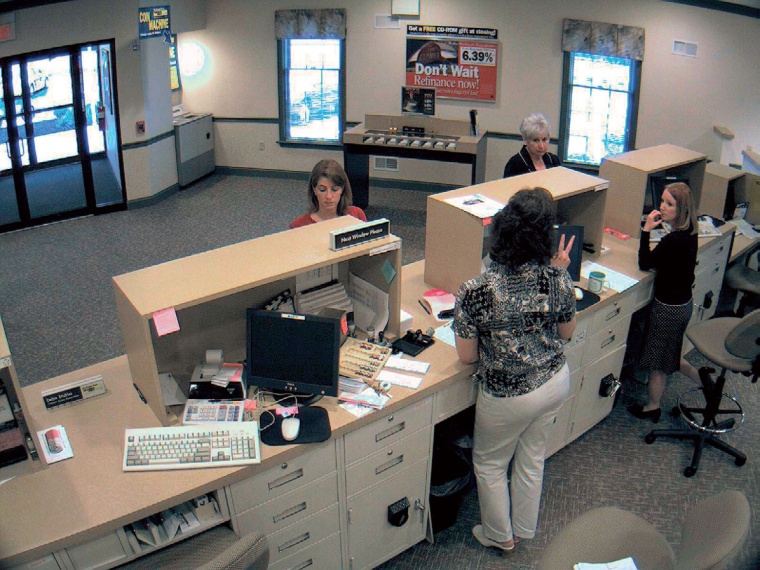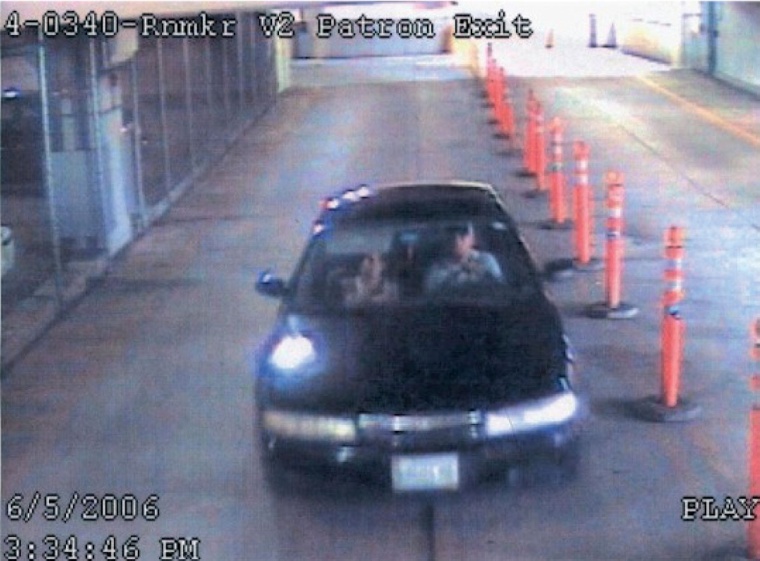Milestone Systems and IQinVision: megapixel cameras with IP video surveillance management software
Milestone Systems and IQinVision: megapixel cameras with IP video surveillance management software. Poor image quality and coverage has long been a problem and often an embarrassme...




Milestone Systems and IQinVision: megapixel cameras with IP video surveillance management software. Poor image quality and coverage has long been a problem and often an embarrassment for video surveillance, keeping it from living up to its promise. How many times, for instance, have you seen on television or in newspapers grainy, blurry video surveillance images of criminals that are worthless for identification? Fortunately, this situation is changing fast. The combination of megapixel IP network cameras and full-featured IP video surveillance management software is enabling much greater image quality, camera control and coverage – all keys to more effective video surveillance, evidence collection, and prosecution. What’s more, this same combination is allowing businesses, governmental organisations, and educational institutions to cover more area with fewer cameras, achieve greater automation in their surveillance activities, and realise significant cost savings.
Systems that Don’t Perform the Way They Should
For years, fuzzy, low resolution images of people, license plates or other potentially incriminating evidence from video surveillance cameras have prevented successful investigations and convictions. A 2007 study of Britain’s much heralded video surveillance system, for instance found that 80 percent of its CCTV (closed circuit TV) footage is of poor quality and that most cameras are being simply used to observe people and traffic, not crime-fighting — even the cameras purposely placed in crime hotspots.
The report concluded that the CCTV “may not be of sufficient quality for police to use in criminal investigations.” It went on to say that “without a better understanding of the degree of coverage, or a clearer and supported end-to-end process, future guidance around common standards in all the areas of concern will fall far short of what is required to ensure a meaningful strategic direction.”
A similar Glasgow study found that “cameras appeared to have little effect on the clear-up rates of crimes and offences generally.” Comparing statistics before and after installation of the cameras, the clear-up rate increased slightly from 62 to 64%. Once figures were adjusted for general trends, however, the research analysts concluded that the clear-up rate actually fell from 64 to 60%. The 1999 date of this study indicates the cameras studied were low-resolution models.
For concrete examples, all one has to do is look at the news. For instance, on 6 March 2008 in New York, a video camera caught the bicyclist who rode up to a Times Square military recruitment centre and planted a bomb. Unfortunately, according to the Associated Press (AP), the private security video was “too murky for police to get a clear description of the cyclist.”
Another surveillance camera caught a July 2005 double killing in California park. The city of Pinole reported that the images of a woman accomplice with the captured suspect were so grainy they weren’t useful. The police could not even generate a sketch. (A frustrated city council later ended up replacing all 47 cameras and upgrading the software.)
In 2006 a surveillance camera caught a suspected terrorist in Cologne, Germany, planning to set off explosives on a train. The resulting image was broadcast all over German television, but its blurriness made it impossible for anyone to clearly identify the terrorist. Fortunately, he was caught by other means.
In Cincinnati, police outright admitted their cameras were not effective. According to Captain Kumberly Frey, “We’ve never really gotten anything useful from them … we’ve never had a successful prosecution.” In truth, the fault for these failures lies not with video surveillance, but with the quality of the equipment and the way it is deployed. It’s estimated that 90% of the surveillance cameras in use today are analogue cameras. These low resolution, low-image quality cameras and their inability to provide good coverage over anything but the narrowest of scenes, are a major reason video surveillance images have a bad reputation for image quality.
But they’re gradually being replaced. And this trend is quickening its pace. The market research firm iSuppli Corporation declares that it’s not a question of if, but when, higher resolution IP network cameras will displace analogue surveillance cameras. The firm estimates US revenue for IP network cameras will grow close to US$ 6 billion by 2011, with analogue revenues dropping steeply downward toward obsolescence. The good news is that today’s megapixel cameras and IP video surveillance management software working together provide much higher quality images and better coverage with fewer cameras. Best of all, the combination of these cameras and software can save you money.
How IP Network Cameras Deliver Superior Images
Analogue cameras have a great disadvantage in resolution compared to digital megapixel cameras. Analogue resolution is limited by NTSC standards (used in North America) at 704 x 480 pixels and PAL standards (used in Europe and many other parts of the world) at 704 x 576 pixels. If you multiply these numbers you get the total pixels. (“Pixel” is short for “picture element” and generally thought of as the smallest single component of an image. Pixels are useful as a way of comparing camera resolution.) NTSC and PAL standards limit analogue resolution to a maximum of approximately 400,000 pixels or 0.4 megapixels.
This is enough for general surveillance in the areas these cameras are generally asked to cover, but often not enough for forensic evidence. If they are tasked with covering an area wider than 16’ wide, the resolution isn’t sharp enough to identify faces and read license plates. What’s more, due to technical and cost restraints inherent in the analogue camera itself and in transmission through coax cable or video encoding/decoding from analogue to digital and back to analogue, you generally see much lower resolution from analogue cameras by the time the video reaches the viewing monitor or printer.
Remember, too, we’re talking about the best analogue cameras. Many analogue cameras in use for surveillance today fall well below the maximum resolutions allowed by NTSC or PAL standards. IP network cameras, on the other hand, have a distinct advantage because they record and transmit digital images with no analogue conversion necessary inside the camera or any need for a video encoder. Consequently, they do not suffer any loss of quality resulting from these conversions.
Thus, with IP network cameras you get every pixel you pay for. Instead of blocky, blurry images, you can get crisp, clear images of faces, license plate numbers, and whatever else appears before the camera.
Megapixel Cameras
The highest resolution IP network cameras are megapixel cameras. A megapixel is 1 million pixels, and is a term used not only for the number of pixels in an image, but also to express the number of image sensor elements of digital cameras or the number of display elements in a digital display. For example, a camera with an array of 2048 ×1536 sensor elements is commonly said to have „3.1 megapixels“ (2048 × 1536 = 3,145,728).
Megapixel cameras are cameras that deliver one or more megapixels of resolution (video surveillance models rated up to 5.2 megapixels and more are available). Most people are well familiar with the term megapixel from consumer digital cameras. Generally, the higher the number of megapixels, the higher the quality of the image and the more you can enlarge images for printing or zoom in on parts of the image for cropping without them becoming so pixelised they lose their image quality and usefulness.
The ultra-high resolution images you get with megapixel IP network cameras solve many of the frustrations organisations have with current lower-resolution video surveillance cameras. Megapixel IP network cameras enable you to cover larger areas with a single camera, realize better picture quality, and digitally zoom in much farther for greater detail. In fact, some megapixel cameras can cover over 60 feet of area while providing good forensic detail (such as the ability to identify faces and read license plates).
Coverage is also an important advantage. By covering a larger area, megapixel IP network cameras significantly improve the viewing experience. Instead of having to monitor the images from several cameras to cover an area, you can monitor the image from a single camera. Megapixel cameras really shine in situations where you want to be able to identify people, objects, license plate numbers, and more. They provide the image quality that’s been missing in video surveillance for forensics and applications like retail point-of-sale monitoring, building entries, metropolitan surveillance, parking lots, airports, schools and casinos.
One advantage of some megapixel digital PTZ (pan/tilt/zoom) cameras is that, while viewing an image live, their digital zoom enables you to record a full-screen image while you use a smaller digital zoom video window to move around in the large image and zoom in on various sections. This is much different from analogue PTZ cameras which can only record what you zoom in or out on. With an analogue PTZ camera, you zoom in on a suspect in a parking lot and you could lose seeing what another suspect in a different area of the parking lot is doing. This is not true with many megapixel PTZ cameras.
While you digitally zoom into a selected area, you continue to film the entire scene. You don’t miss a thing. Another advantage of digital zoom is that it saves bandwidth. When you’re accessing an image over a network (WAN) or the Internet, it doesn’t need to be in megapixel resolution until you see something that interests you. When you zoom in, the megapixel resolution kicks in, providing more detail as you zoom farther and farther in.
IP Video Surveillance Management Software Makes It a System
IP network cameras (megapixel and otherwise) are essentially a camera and a computer combined in one unit. They have their own CPU and IP address. They capture and transmit live images directly over an IP network, enabling authorised users to locally or remotely view, store, and manage video over standard IP-based network infrastructure and the Internet. But just like any computing hardware, it’s the software that makes it useful.
And in the case of IP network cameras, it’s the IP video surveillance management software you choose that really makes them a video surveillance system. In fact, not only does this software enable you to monitor and control your cameras, depending on the software you choose, it adds many capabilities. Here’s an example.
Using IP video surveillance management software, intelligent IP network cameras can be programmed through video analytics (software technology used to analyse video for specific data such as the suspicious movement of people or assets) to recognise events such as a person entering the scene or a package being left unattended and trigger alerts that can be sent over the Internet to a desktop computer, laptop, PDA or even cell phone. This opens all kinds of opportunities for cost efficiencies.
For instance, instead of using local security staff to view monitors, monitoring can be centralised nearly anywhere in the world. What’s more, in many cases, video analytics can be used instead of people to watch over sites. Cameras can even be programmed to only keep video before and after an event to reduce the amount of captured footage and network traffic. The alerting capabilities of IP video management software are particularly powerful.
They can enable you to become more proactive in your response to situations. Imagine a camera filming someone suspiciously moving around parked cars. While it records, it sends an alert that goes to the nearest security officer. This officer, viewing the live footage on their laptop can decide how to response. If the software offers digital zoom capabilities, then even if the camera is not a PTZ IP network camera, the officer could still zoom in on the person to observe more closely what they’re doing and perhaps see whether he or she is armed. You may find more capabilities that IP video surveillance management software alone can add to your video surveillance on www.milestonesys.com/support/ documentation/white_papers.)
The Dynamic Duo: IP Video Surveillance Management Software and Megapixel Cameras
Coupling powerful IP video surveillance management software with powerful megapixel IP network cameras makes a whole that’s much greater than its parts. Such sophisticated software offers many advantages when used with these and other cameras. One of its greatest capabilities is the ability to handle an unlimited number of cameras, even megapixel cameras, across multiple sites. This ensures a video surveillance system that can grow with your organisation.
Another important advantage of robust video surveillance management software is that it makes better use of server resources (microprocessors and memory) to handle incoming video data more efficiently. The most advanced IP video surveillance management software enables simultaneous digital multi-channel video and audio recording, and live views of up to 64 cameras per server. Equally important to look for, is how efficiently a software product uses client hardware resources (microprocessor, memory and graphic cards) on the system your staff will use for viewing.
This will determine how many megapixel images you can view on a client at a time. The best software makes maximum advantage of client capabilities on a variety of platforms. The best IP video management software will also make your security staff more efficient by providing a more productive user environment. Features like multi-stream views, for instance, allow multiple people to access the same camera’s live views and even independently zoom into different parts of the image.
This can be important when both local and remote staff are monitoring a situation. Advanced IP video surveillance management software even allows one view to have multiple windows open with different zooms from the same camera. Another feature you’ll find in such full-featured software is digital zoom for even fixed cameras. With this feature, you can zoom in on live images provided by cameras that have no zoom feature.
Naturally, the higher the resolution of the camera, the higher the quality of the image obtained by the zoom. On a megapixel camera, the results can be stunning. Another feature to look for is ability of the software to keep and record the big picture view while you zoom in on one aspect of the image.
With advanced IP video surveillance management software, you can even make printouts or AVI movies of each independent image — the zoom view and the full view. Another thing to look for in software is whether it’s designed to deliver the best use experience on a wide range of devices. The best solutions use video quality optimisation to automatically maximise live and playback windows for the device on which they’re being viewed. To save storage space, some IP video surveillance software products enable you to receive at a higher frame rate while recording at a lower frame rate.
Summary
Obviously, there are many more factors to consider in any video surveillance installation. The bottom line is that megapixel cameras represent a very cost-effective solution for providing excellent camera coverage and better image quality with fewer cameras. Even better, the right IP video surveillance management software adds many advanced capabilities that enable you to better take advantage of the full capabilities of these cameras, as well as turn them into a powerful video surveillance system.
Eric Fullerton,
Corporate Chief Sales and Marketing of Milestone Systems A/S
Paul Bodell,
Chief Marketing Officer, IQinVision
Contact:
Milestone Systems A/S,
Brøndby, Denmark
Tel.: +45 88 300 300
Fax: +45 88 300 301
Stefan Teuber
Milestone Systems DE,
Haag, Germany
Tel.: +49 8072 44 2173
www.milestonesys.com
IQinVision,
San Clemente, CA, USA
Tel.: +1 949 369 8100
Fax: +1 949 369 8105
paul.bodell@iqeye.com
www.iqeye.com
most read


Security management, building security & perimeter protection: the winners of category E at the GIT SECURITY AWARD 2026
GIT SECURITY AWARD 2026: Security management, building security & perimeter protection - an overview of the most innovative solutions

Intersec Saudi Arabia 2025 Concludes With Record Exhibitor Participation and Strong Industry Engagement
The seventh edition of Intersec Saudi Arabia showcased 434 exhibitors from 40 countries and welcomed 23,894 attendees

Is Your Venue Ready for Martyn’s Law?
Martyn’s Law demands stronger security by 2027. Is your venue prepared to protect and respond?

Machine & plant safety: The winners of category A at the GIT SECURITY AWARD 2026
GIT SECURITY AWARD 2026: Machine & plant safety - an overview of the most innovative solutions








